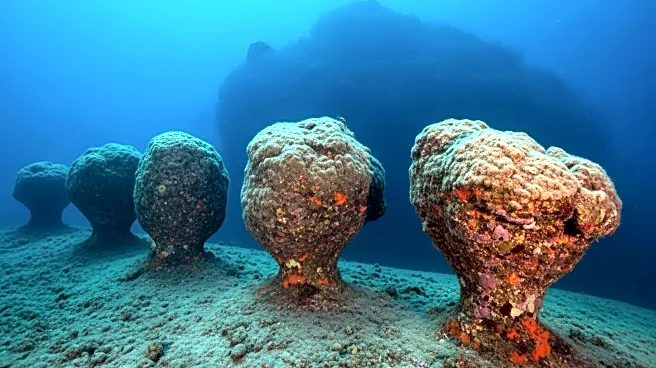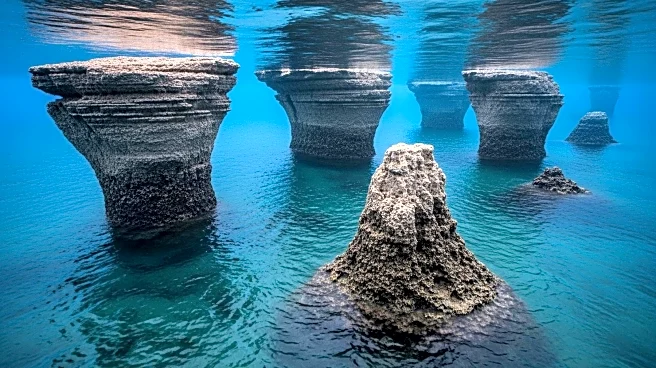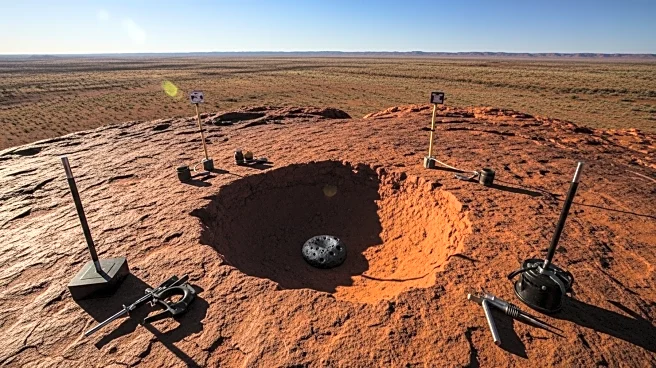What's Happening?
Recent research has uncovered colossal 117-million-year-old structures beneath the Atlantic Ocean, providing new insights into the geological history of the Earth. These structures, identified as mud waves, were formed during the separation of South America and Africa. The discovery was made by geologists from Heriot-Watt University and other institutions, who analyzed sediment cores drilled off the coast of western Africa. The mud waves are believed to have formed due to the mixing of highly saline water from the South Atlantic with less salty water from the North Atlantic, creating powerful currents. This geological event is linked to significant climate changes, as the opening of the Atlantic Ocean may have led to a period of global warming by disrupting carbon sinks.
Why It's Important?
The discovery of these ancient structures is significant as it challenges previous assumptions about the formation of the Atlantic Ocean and its impact on global climate. The findings suggest that the opening of the Atlantic was not only a geological event but also had profound implications for Earth's climate. The release of carbon during this period may have contributed to a global warming event, highlighting the interconnectedness of geological and climatic processes. This research provides a clearer understanding of Earth's past climate changes, which is crucial for predicting future climate scenarios.
What's Next?
Further research is expected to focus on analyzing the sediment cores to gain more detailed insights into the processes that led to the formation of the Atlantic Ocean. Scientists may also explore the implications of these findings for understanding current climate change patterns. The study underscores the importance of geological research in informing climate science and may lead to new collaborations between geologists and climate scientists.










